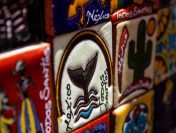Daikoku—home to Cabo’s most lovely Zen garden—continues to get better and better.
By Sandra A. Berry
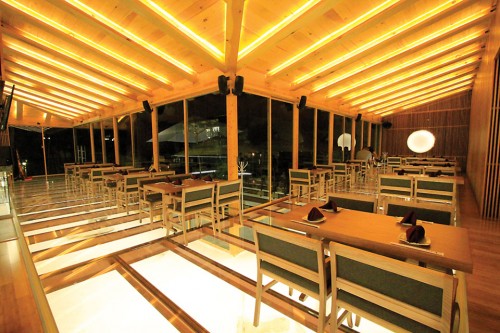 Founded in 1971 in México City by a Japanese family, the Daikoku restaurant is now well known across the country. There are three locations in México City and one in Tijuana. The Cabo San Lucas location is the franchise’s newest location, having opened in 2014.
Founded in 1971 in México City by a Japanese family, the Daikoku restaurant is now well known across the country. There are three locations in México City and one in Tijuana. The Cabo San Lucas location is the franchise’s newest location, having opened in 2014.
When you arrive at the Cabo San Lucas Daikoku, enjoy the luxury of having the red-coated valet park your car in a well-secured parking lot. You can then cross over the koi pond, walk past the water-flowing tables and authentic water wheel in the garden, and enter through the automatic sliding glass door. Your presence will be acknowledged immediately with an authentic Japanese greeting by the sushi chefs: Irashai! The expression is a wish for good health and happiness. You can nod with a little bow.
When Daikoku opened in 2014, it immediately became one of the most beautiful restaurants in Cabo San Lucas. But the owners are not ones to rest on their laurels. In response to requests from guests, the restaurant now boasts two teppanyaki tables in the Japanese garden. Each seats six, and there is a complete teppanyaki menu. For those who do not know, modern teppanyaki grills are typically propane-heated flat surface grills and are used to cook food in front of guests, usually beef, shrimp and veggies. It’s a fun and creative way to experience an authentic Japanese custom.
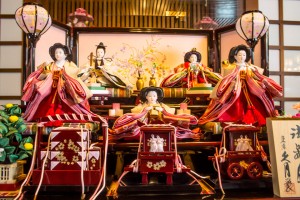 Another new addition to the Cabo San Lucas Daikoku is a mobile sake cart from which the house rice wine is served from a container that is rolled around to the individual tables. There are 23 variations of sake available—opt for cold, hot, or sparkling—all of which go nicely with the great variety of Japanese dishes. A sake house specialty is hot sake with fish fin. It’s not on the menu, so you will have to remember to ask for it. It gives off a delicious aroma and unique taste. In addition to its extensive cocktail and wine lists, the full bar serves Japanese beer and prosecco. The Italian sparkling wine that is a nice accompaniment to Japanese dishes, especially with fish.
Another new addition to the Cabo San Lucas Daikoku is a mobile sake cart from which the house rice wine is served from a container that is rolled around to the individual tables. There are 23 variations of sake available—opt for cold, hot, or sparkling—all of which go nicely with the great variety of Japanese dishes. A sake house specialty is hot sake with fish fin. It’s not on the menu, so you will have to remember to ask for it. It gives off a delicious aroma and unique taste. In addition to its extensive cocktail and wine lists, the full bar serves Japanese beer and prosecco. The Italian sparkling wine that is a nice accompaniment to Japanese dishes, especially with fish.
The restaurant serves only Pacific bluefin tuna. Considered the emperor of tuna, bluefin is used especially for sushi and sashimi. The taste is different; it’s sweeter than other tuna with a creamier texture. The belly of the tuna is called toro and is the best part with a high-fat content. The more common yellowfin is more tender and milder in taste. Other house specialties include fresh oysters on the half shell, live lobsters, and abalone.
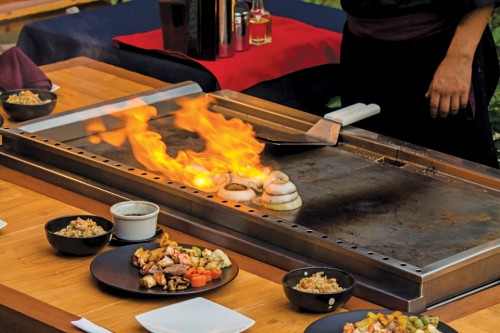 Take a look at the live tanks on the sushi bar, and, besides the lobster tank, you might be surprised to see giant clams larger than a man’s fist. Although an oddity to see, they are tasty. Order the whole clam, and it can be prepared as sashimi, sushi, and cooked in butter. This might be for a special dinner, perhaps in the cava or wine cellar, with its entrance off the Japanese garden. Walk over the koi pond, through the door and down the spiral stairs into the lovely room that can be reserved for one table or can accommodate 10–15 people, depending on the occasion. Private dining can also be arranged in the outdoor dining area for a special event with the lovely Japanese garden in full view.
Take a look at the live tanks on the sushi bar, and, besides the lobster tank, you might be surprised to see giant clams larger than a man’s fist. Although an oddity to see, they are tasty. Order the whole clam, and it can be prepared as sashimi, sushi, and cooked in butter. This might be for a special dinner, perhaps in the cava or wine cellar, with its entrance off the Japanese garden. Walk over the koi pond, through the door and down the spiral stairs into the lovely room that can be reserved for one table or can accommodate 10–15 people, depending on the occasion. Private dining can also be arranged in the outdoor dining area for a special event with the lovely Japanese garden in full view.
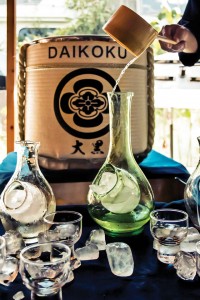 Take a few moments to look around at the beautiful Japanese trappings; your eye will surely stop at the Hina doll and Tsurushibina display on the far wall near the sushi bar. Each doll is made by hand, dressed in kimono, and has special meaning. When a Hina doll is given as a gift to a daughter. An annual doll festival is held in March in Japan. Each of the hanging Tsurushibina ornaments has a meaning with a special wish for their daughter to grow up healthy, wealthy and full of happiness.
Take a few moments to look around at the beautiful Japanese trappings; your eye will surely stop at the Hina doll and Tsurushibina display on the far wall near the sushi bar. Each doll is made by hand, dressed in kimono, and has special meaning. When a Hina doll is given as a gift to a daughter. An annual doll festival is held in March in Japan. Each of the hanging Tsurushibina ornaments has a meaning with a special wish for their daughter to grow up healthy, wealthy and full of happiness.
Some of the chef’s specialties that are popular with diners are the gyu ramen topped with a rib eye steak on ramen noodles, or the kaisen soosu yakisoba, full of seafood with noodles and topped with salmon fillet, both great for sharing.
Sushi lessons are now offered for two or more people for approximately $25 U.S. per person for two hours that includes one appetizer and two sushi rolls. Banquet service, home delivery, and catering with staffing are also now available. Another nice add-on to the extensive menu is flamed desserts with a choice of apple, strawberry, banana, or cherry served on top of ice cream. Mexican coffee flamed at the table has also been added.
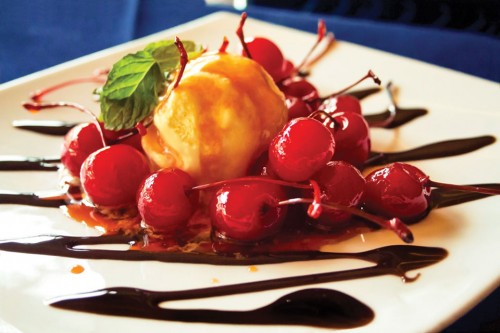 For a fun memento, you and your guests may don a colorful happi coat, available for taking photos. These traditional Japanese straight-sleeved coats are imprinted with a distinctive crest and usually worn only for festivals. Originally they represented the crest of a family and worn by house servants. Later the coats began to display the crests of shops and organizations. Even firefighters in the past also used to wear the happi coat with the symbol on their backs referred to the group with which they were associated. So, make all your visits to Daikoku a festive occasion with a commemorative photo wearing an authentic happy garment.
For a fun memento, you and your guests may don a colorful happi coat, available for taking photos. These traditional Japanese straight-sleeved coats are imprinted with a distinctive crest and usually worn only for festivals. Originally they represented the crest of a family and worn by house servants. Later the coats began to display the crests of shops and organizations. Even firefighters in the past also used to wear the happi coat with the symbol on their backs referred to the group with which they were associated. So, make all your visits to Daikoku a festive occasion with a commemorative photo wearing an authentic happy garment.
When finished with your meal, your car will be ready for you when you are finished with your lunch or dinner. This is just one of the many perks you get when making the decision to eat at this very unique Japanese restaurant.
Daikoku is open 365 days a year from noon to 11:30 p.m. Plaza Nautica, Blvd. Marina, Cabo San Lucas, (624) 143-4038 or (624) 143-4267, www.daikoku.com.mx. AmEx, MasterCard, Visa, and vouchers accepted.



